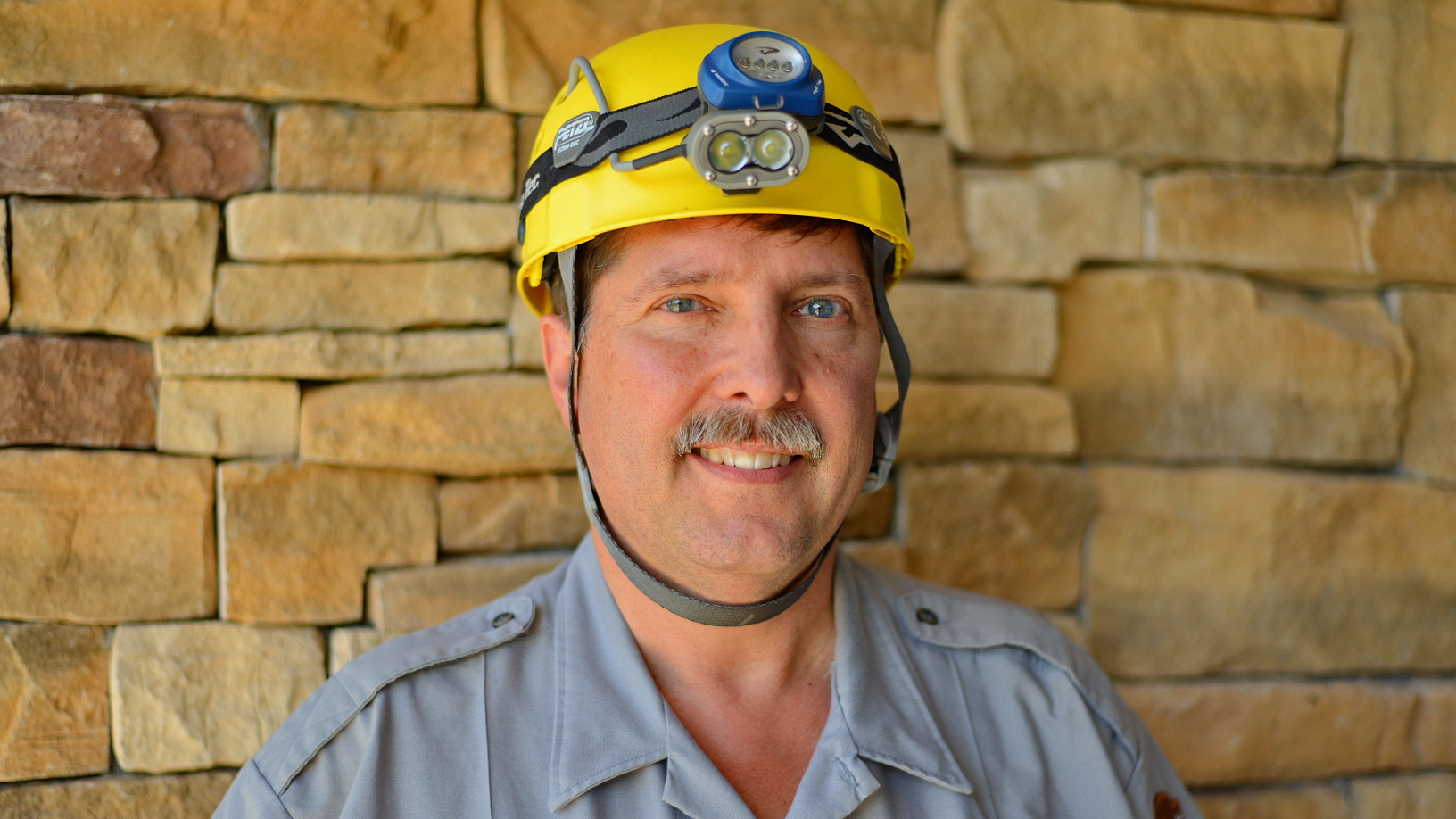
As Carlsbad Caverns’ cave specialist, Rod Horrocks helps to create a living laboratory for researchers, including Nasa scientists who search for life on other planets.
A towering stone pillar emerged in my headlamp like a petrified cake dripping icing. Above it, another speleothem tapered downward, a swollen drop of water glinting at its tip.

I was 750ft beneath New Mexico’s Chihuahua Desert with ranger Rod Horrocks, the cave management specialist at Carlsbad Caverns National Park. We were exploring Left Hand Tunnel – one of the park’s undeveloped caves, accessed only by scientists and permitted tours.
“Put on your gloves and follow me,” Horrocks said as he disappeared into a narrow side passage. After carefully crawling over a sturdy lattice of bone-like formations, I saw him pointing to a series of pearly, tomato-sized spheres in varying stages of inflation clinging to the wall. “These are hydromagnesite balloons,” he explained. “They’re fairly rare.” Concentrated magnesium left by water coats the wall, leaving a thin skin, and gases from chemical reactions trapped underneath gently inflate them. The impossibly delicate balloons underscore that Carlsbad is a living cave system still in a state of formation after 250 million years.

Horrocks has been a cave management specialist with the US National Parks Service for the last 24 years, and traces his passion for caving back to a Missouri rock quarry he visited with his father when he was seven. “We were looking at rocks when these two teenagers emerged from a hole and said they had been exploring a cave that goes all the way through the mountain,” Horrocks said. “I wanted to go in, but Dad wisely said no. So I went to the library and read every book I could get on caves. I was hooked.”

After earning a master’s degree in computer-aided cartography from Brigham Young University in 1992, Horrocks became the cave management specialist at Timpanogos Cave National Monument, Great Basin National Park and Wind Cave National Park. During this time he also studied related-caving disciplines including geology, palaeontology and archaeology, working with experts in the fields. Throughout his career, he assisted with research and surveying projects at Carlsbad Caverns, hoping to one day secure a permanent position. Finally, in early 2016, he did.

“There weren’t any degrees in caving when I started, so I pieced together as many disciplines used during cave exploration and study as I could,” Horrocks said. “Caves are like time capsules offering clues from the formation of the planet to the beginning of human civilization.”
Now, he uses his many areas of expertise to monitor and minimize human impact on this vast cave system, while ensuring that the 407,000 tourists who visit the park annually enjoy their experience. Carlsbad Caverns National Park encompasses 119 known caves, but only the main Carlsbad Cavern is open to non-permit, daily public visitation.

While Horrocks works on the cave’s dramatic LED lighting that showcases its soaring formations (which resemble a cross between a Gaudi cathedral and the skeleton of some enormous Middle Earth beast), his main focus is to help ensure that the other park caves are kept as natural as possible. They provide a living laboratory for scientists from many different fields, who are studying a range of topics from climate change to life on other planets.
For instance, Horrocks coordinates with biologists studying bats in order to combat white nose syndrome, a fungal infection that has decimated several species of bats in the eastern United States. By obtaining a baseline in healthy caves, scientists can monitor for harmful changes. With the Zika virus expected to reach North America, Carlsbad’s hundreds of thousands of Mexican free-tail bats – emerging nightly during the summer to feast on insects, including mosquitos – are a critical resource.

He also aids Nasa scientists who are researching mineral-eating bacteria here in their search for life on other planets and moons. Caves are completely devoid of sunlight and organic material, so extremophiles that survive in caves by eating elements such as sulphur may offer clues to how life could survive elsewhere in the universe. Studying bacteria that feed on petrochemicals could also be helpful in cleaning oil spills.
“The caves here are on par with the Mariana Trench as far as exploration,” Horrocks said. “We’ve only discovered a fraction of the microbial life down here and how it survives without sunlight or organic nutrients.” Horrocks hopes that the biologists will discover medical uses for these bacteria and yet-to-be discovered lifeforms that could potentially help cure diseases.

“This is a dream job,” Horrocks told me as we wound our way back toward the entrance of Left Hand Tunnel. “Caves are one of the last places left on Earth for exploration, and who knows how the science conducted down here will benefit us.”
If you liked this story, sign up for the weekly bbc.com features newsletter, called “If You Only Read 6 Things This Week”. A handpicked selection of stories from BBC Future, Earth, Culture, Capital, Travel and Autos, delivered to your inbox every Friday.